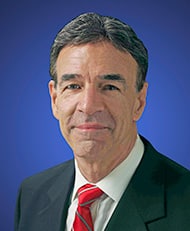
Cities in other sections of the county had a similar range of populations. Norcross had 1,605 residents, Dacula, 440, Duluth, 1,483, Suwanee 541, Buford 4,168 and Sugar Hill 1,175.
Throughout the Sixties and Seventies the populations of some Gwinnett cities grew slowly and predictably. Growth seemed to be driven primarily by the tendency of marriages to be followed by the birth of another child every year or two. Yet in other cities, populations increased at unprecedented rates. The contrast is dramatic; between 1960 and 1970, Snellville’s population grew 325% while Buford grew a mere 11%.
With the dawn of the 1980s, the situation changed from one end of the county to the other. Gwinnett had been “discovered” by people across the nation who were looking for a better place to live. For three consecutive years, 1986, 1987 and 1988, Gwinnett County ranked as the fastest growing county in the United States (among counties with a population over 100,000). By 2010, according to the U.S Census for 2010, Gwinnett County’s population had reached 805,324. Of those 800,000+ residents, 18,265 lived in Snellville, 2,666 in Grayson, 28,391 in Lawrenceville 11,667 in Lilburn, 12,236 in Buford, 4,442 in Dacula, 26,601 in Duluth 15,174 in Norcross 18,524 in Sugar Hill and 15,355 in Suwanee.
The influx of thousands of new residents changed the character of the cities and placed demands on them (and county) that they were simply not prepared to handle. Consequently, in the rush to accommodate new development, in many instances planning and zoning decisions were, shall we say, less than optimal. The priorities of the time were also unique as the focus of city officials, planners and staff members was on the most expeditious means of accommodating the flood of new residents.
Population growth within the county ultimately slowed to a more reasonable pace, and as Gwinnett’s cities have matured in their expanded form, priorities have been refocused. Much of that refocusing is being driven by changes in demographics, specifically, the emergence of the “Millennial” generation and the changing preferences of “Baby Boomers”. Although they are at opposite ends of the age spectrum, “Millennials” (approximate age range 18 to 33) and “Baby Boomers” (approximate age range 50 to 68) share a number of similarities in their lifestyle choices.
For vastly different reasons, when evaluating new places to live, members of these generational groups want an environment that offers convenience and “walkability. Those terms refer to a residence that requires little, if any, time or expense for landscape or structure maintenance, and is located within walking distance of restaurants and stores.
Each city in Gwinnett County has a unique history and growth pattern, so it naturally follows that plans for the future differ accordingly. Some cities are revitalizing existing downtown areas, others are developing new ones. Some Gwinnett cities are also exploring new options for housing and business development and recreation. However, a common denominator is that each city has projects in motion, or recently completed to make itself more inviting to Baby Boomers, Millennials and everyone in between.
Dave Emanuel is Vice President of Random Technologies, a manufacturing company in Loganville, and a Snellville City Councilman. To read more from Dave Emanuel visit www.cuttothe-chase.net

